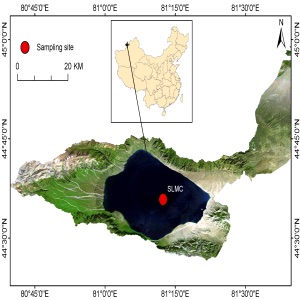 Smart Citations
Smart CitationsSee how this article has been cited at scite.ai
scite shows how a scientific paper has been cited by providing the context of the citation, a classification describing whether it supports, mentions, or contrasts the cited claim, and a label indicating in which section the citation was made.
The prevalence of Atribacteria affiliated with JS1 in the sediment core of Lake Sayram, the largest alpine lake, China
Atribacteria play an important role in global carbon cycling. Little is known, however, about the Atribacteria communities found in
alpine lakes. The presence and diversity of Atribacteria in the sediment core of alpine Sayram lake in China were investigated using
Illumina MiSeq sequencing in this study. According to the findings, Atribacteria affiliated with JS1 were dominant in the sediment core
of Sayram Lake, with a relative abundance of 0.19 to 10% (average 3.75%) of all bacterial sequences. Furthermore, the relative
abundance of Atribacteria associated with JS1 increased with sediment depth. As a result, this study significantly contributes to our
understanding of Atribacteria community habitat.
Downloads
Edited by
Ester Eckert, National Research Council, Water Research Institute (CNR-IRSA), Verbania Pallanza, ItalySupporting Agencies
National Natural Science Foundation of ChinaHow to Cite

This work is licensed under a Creative Commons Attribution-NonCommercial 4.0 International License.

 https://doi.org/10.4081/jlimnol.2023.2152
https://doi.org/10.4081/jlimnol.2023.2152





